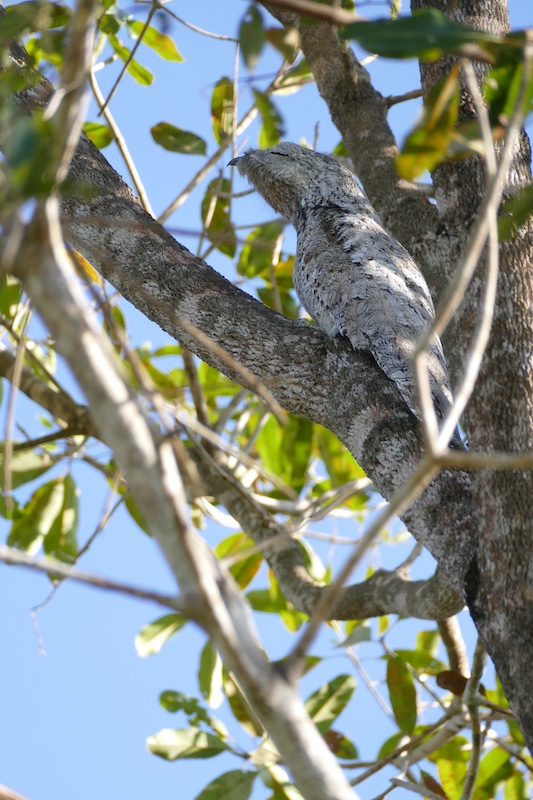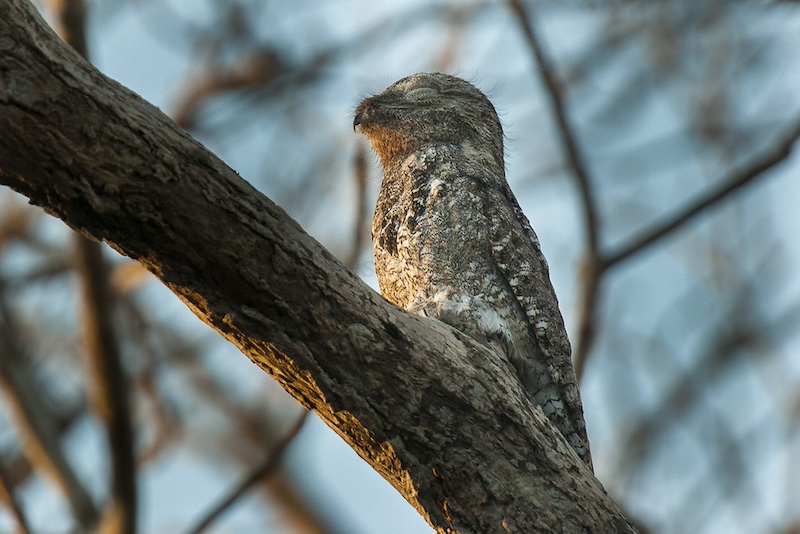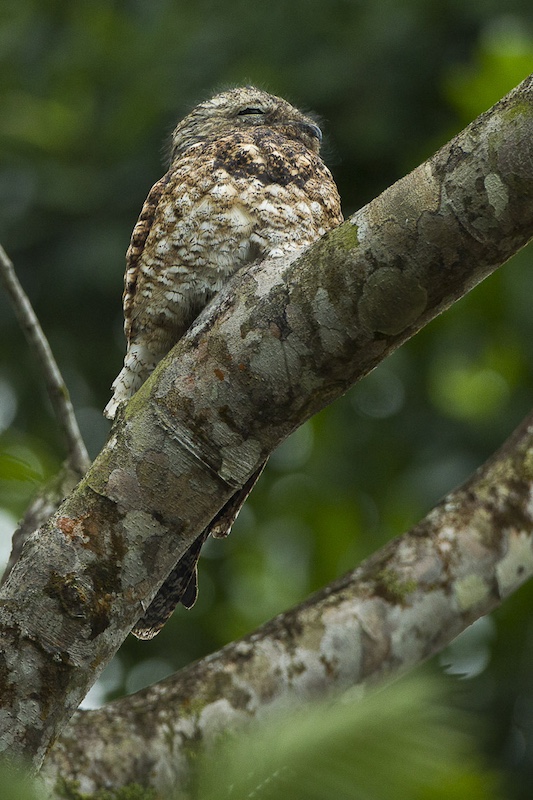A rare bird with unique characteristics: The great potoo (Nyctibius grandis)

Geographic Range
Great potoos are neotropical birds found throughout Central America, ranging from southern Mexico to Bolivia.
Habitat
Great potoos are birds that mainly inhabit forests and rainforests, although they have also been spotted in forest edge habitats and on farmlands. During the daytime, they can usually be found perched or nesting at least 12 meters above ground level in larger trees. They often choose branches that are around 20 to 30 centimeters in diameter. At night, they may move to lower perches, sometimes as low as 1.5 meters above the ground, from where they hunt.
Habitat Regions: tropical terrestrial
Terrestrial Biomes: forest, rainforest
Other Habitat Features: Agricultural
Physical Description
Great potoos have relatively large heads in proportion to their bodies. They possess large eyes with a light brown to yellow iris and short but broad beaks, providing them with a very wide gape. In comparison to other Caprimulgiformes, their facial bristles are reduced to non-existent. They have elliptical wings with an elongated tail that helps in steering during quiet landings on tree branches. The plumage is white to grayish with marbled black and burgundy tones. The tail coloring matches that of the body, except the 8 or 9 white bars that extend laterally across it.
Reproduction
Great potoos are monogamous breeders with no physical differences between the sexes. It currently needs to be discovered how they allocate their time at the nest.
Mating System monogamous

The Great Potoo bird’s nesting season occurs from June through August in Venezuela and in November in Surinam, corresponding to the wet seasons in those areas. These birds lay one egg per clutch, and it needs to be clarified how long the incubation period lasts. Instead of building nests, they lay their eggs in deeper notches of larger branches in their roosting trees. The hatching process for Great Potoos needs to be well documented, but only one parent is present at the nest during incubation. The weight of the nestling at hatching is also unclear, with the youngest observed nestling mortality weighing 220g. After 55 days of hatching, chicks are ready to leave the nest. They develop quickly, with their body feathers appearing approximately two weeks after hatching. By the fifth week, the chicks are almost 2/3 the length of their parents. One month after hatching, chicks begin leaving and investigating the nesting branch. After a month and a half, adults no longer tend to the young during the day. Instead, the only interactions between parent and offspring are after dark, probably involving feeding behavior. At just under two months, offspring usually leave the nest without returning to roost during the day.
Both male and female great
potoos take turns incubating eggs at the nest during the day. It has been noted that both parents are never simultaneously present or around the nest during the incubation period. Once the eggs have hatched, both parents hunt for prey at night and return to the nest to feed the young. This feeding process continues until the offspring are fully grown and leave the nest permanently.
Behavior

Great potoos are a species that prefer to live alone. Although they may interact with their children during parental care and provisioning, they are generally solitary creatures. These birds are active at night and primarily hunt for prey such as large flying insects and occasionally bats. They catch their prey by sallying flights from their perches, then returning to consume it. They swallow their prey whole, after engulfing it in their large gape. During the day, they remain still and try to find a higher perch to avoid movement, which helps enhance their cryptic coloration. When nesting, they reduce their movement to a minimum unless they perceive a threat, in which case they freeze, which is thought to be a form of predation vigilance. Great potoos have a unique grooming behavior: they scratch their heads by moving their foot up and over the wing instead of coming up from beneath the wing.
Food Habits
Great potoos are carnivorous birds that hunt for flying prey at night, usually large insects and occasionally bats. They typically fly from a lower perch, catch the prey item, and then return to the perch to consume it.
Predation.
Great potoos are large birds with highly cryptic coloration that help them blend in with their surroundings. During the day, these birds remain relatively still and become even more alert when disturbed. Their predators include monkeys such as Cebus, Ateles geoffroyi, and Alouatta palliata, tayras like Eira barbara, and collared forest falcons such as Micrastur semitorquatus. Both parents are present at the nest during the day and use their coloration to camouflage the nesting hole.
Conservation Status
According to current information, great potoos are not in immediate danger of extinction. They have a wide distribution range and can travel long distances. However, it is believed that their population has greatly declined due to deforestation caused by slash-and-burn agriculture. Nonetheless, the remaining populations are thought to be quite large.
